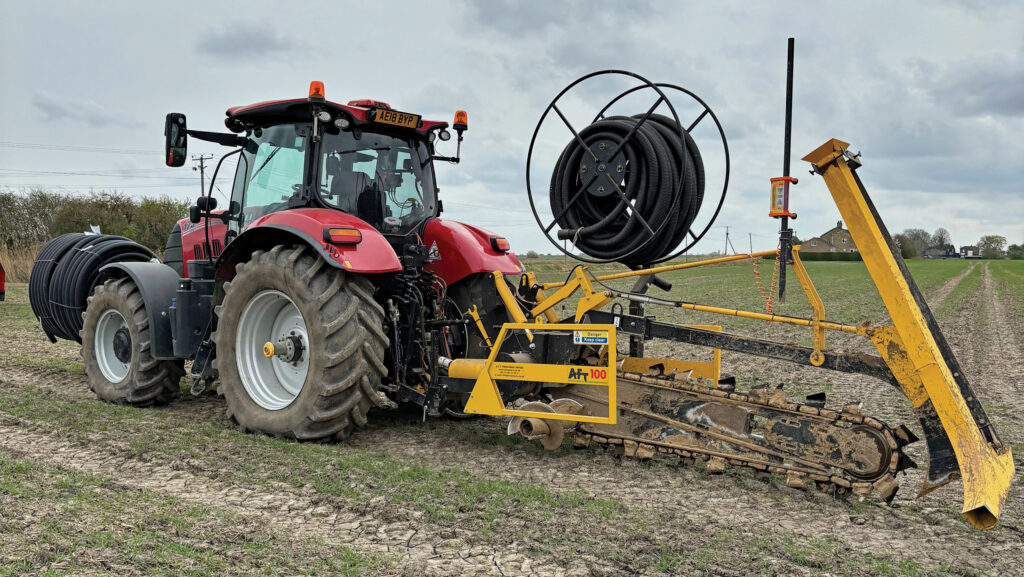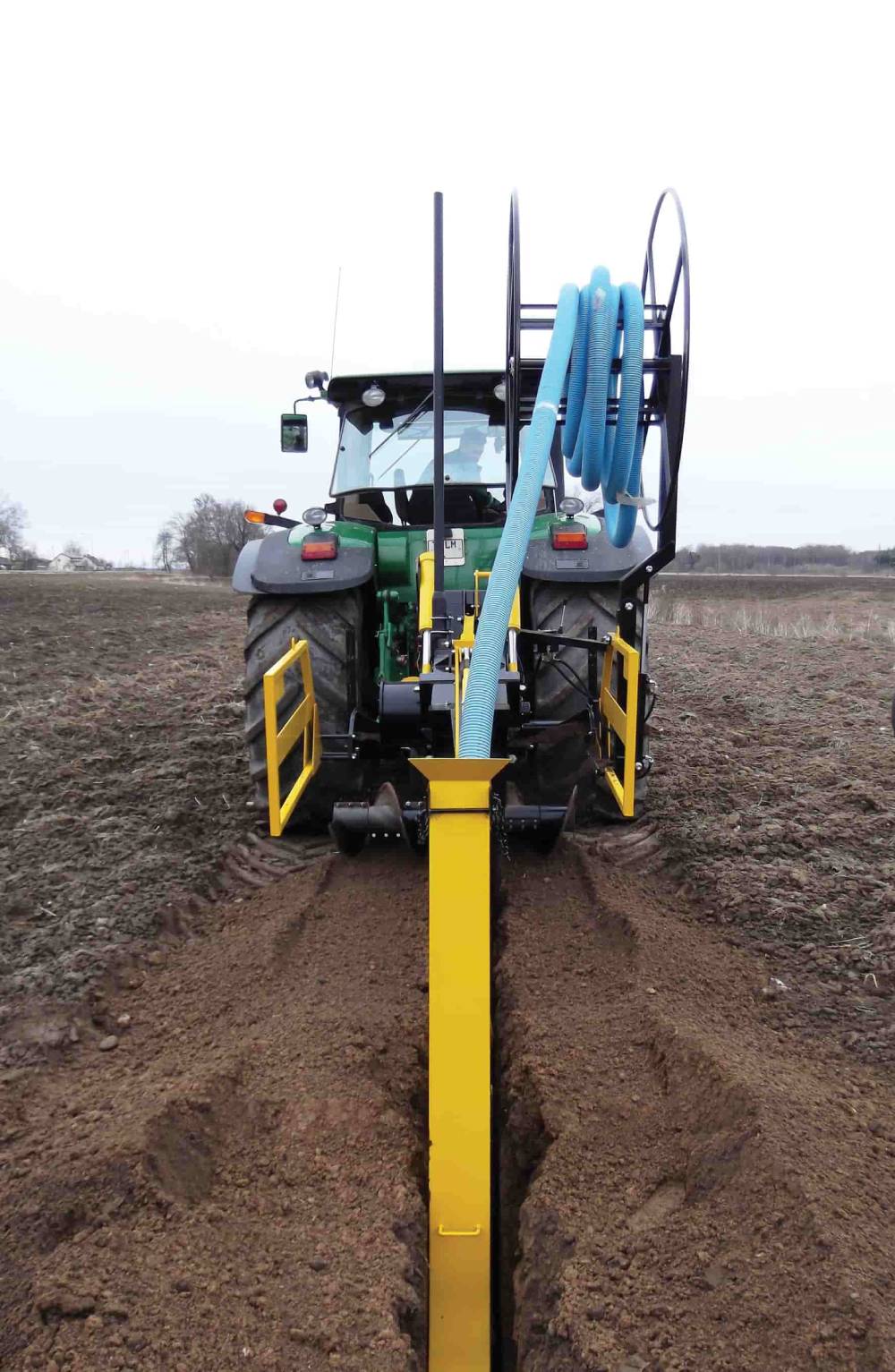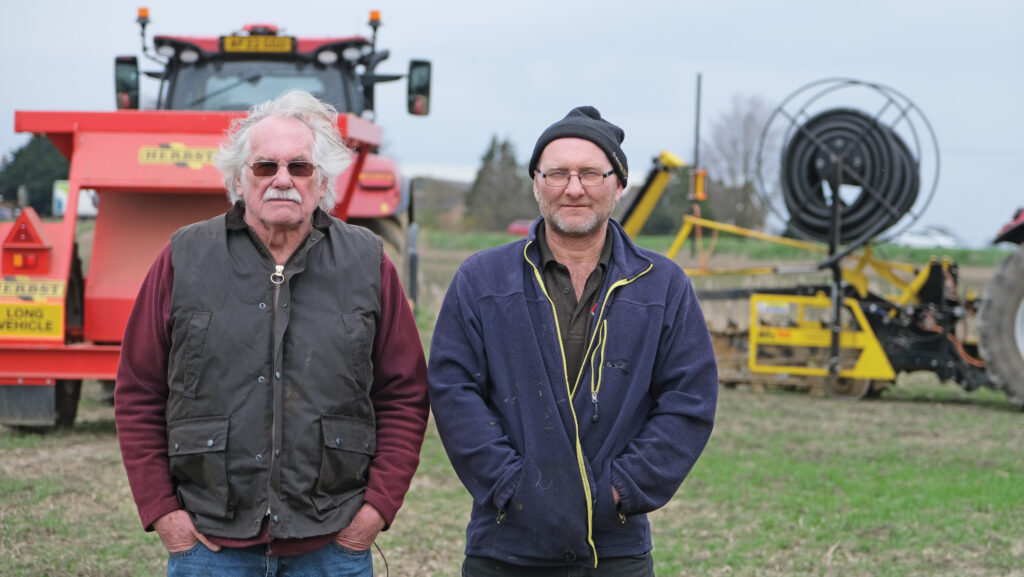
The Mead farm, situated in Guyhirn, Cambridgeshire, is a 223ha arable operation. However, the farm’s mix of silt loam ridges and clay hollows has led to persistent drainage issues, particularly during winter months. Waterlogging has become a significant problem, with four undrained fields being the worst affected. The Meads knew they had to take action to prevent further damage to their crops and soil. Initially, they considered hiring local contractors to carry out the drainage work, but quotes ranging from £2,500 to £3,000 per hectare made them think twice. With a significant portion of their land requiring drainage, the Meads decided to take matters into their own hands and invest in their own drainage equipment, opting for a DIY approach to tackle the problem.
Background
The Mead farm’s soil composition is a mix of silt loam ridges and clay hollows, which has led to persistent drainage issues. The farm’s history dates back to the 1960s, when clay drains were first installed to combat waterlogging. However, over the years, these systems have begun to lose their effectiveness, and the farm’s drainage problems have worsened. The clay hollows, in particular, have become increasingly prone to waterlogging, making it difficult to grow crops. The extent of the drainage problem is significant, with approximately 72 hectares of land in urgent need of attention. This is a substantial portion of the farm, and the Meads knew they had to take action to prevent further damage to their crops and soil. The situation was exacerbated by the fact that some of the land sits below sea level, relying on the nearby Cross Guns pumping station to keep the water level down.
Decision to Invest
The Meads knew they had to invest in a drainage solution, but they were faced with a significant decision: to hire a contractor or take the DIY approach. The contractor quotes they received ranged from £2,500 to £3,000 per hectare, which would have put the total cost at around £180,000 to £215,000 for the 72 hectares needing attention. In contrast, the Meads estimated that purchasing their own drainage equipment would cost significantly less, with a budget of around £35,000 to £40,000. With this budget in mind, they explored their options, considering both second-hand and new machinery. However, the second-hand market proved to be a minefield, with concerns about the reliability and maintenance costs of used equipment. Ultimately, they decided to invest in a new AFT100 trencher, which offered the latest technology and a high level of precision, making it the best value for their money.
AFT100 Trencher Specifications
The AFT100 trencher, chosen by the Meads, is a high-performance drainage solution that offers a range of features and specifications to tackle their waterlogging issues. The trencher is available with various digging depth options, including 1m, 1.2m, 1.4m, 1.6m, and 1.8m, allowing the Meads to choose the most suitable depth for their specific needs. The digging width can be adjusted between 125mm and 300mm, providing flexibility for different pipe sizes and soil types. The AFT100 features a laser-guided depth control system, which ensures accurate and consistent trenching. Additionally, the trencher comes equipped with a hydraulic pipe reeler and an automatic laser guidance system, making it easy to lay pipes with precision. Other notable features include a combined gravel hopper and pipe laying chute, which enables efficient and simultaneous installation of pipes and gravel. With its advanced technology and versatile specifications, the AFT100 trencher is an ideal solution for the Meads’ drainage needs.
Acquisition and Setup
The Meads purchased the AFT100 trencher for £35,300, a significant investment in their drainage solution. In addition to the trencher, they also acquired a Herbst gravel trailer for £9,500, which would enable them to efficiently transport and lay gravel in the trenches. To complement the trencher, the Meads custom-built a front linkage-mounted blade, fashioned from an old Farmforce front press, to fill in the trenches after pipe laying. This innovative solution allowed them to push soil back into the trench, creating a neat and even surface. Before commencing the drainage work, the Meads collaborated with Lincolnshire Drainage Services to survey their fields and design the most efficient drainage system. This expert guidance ensured that the Meads’ DIY approach would be effective in tackling their waterlogging issues. With their equipment and plan in place, the Meads were ready to start digging and transforming their land.
Using the AFT100 Trencher

Operating the AFT100 trencher required a systematic approach. First, the Meads would set up the machine on the edge of the ditch or drain, ensuring it was level and secure. Next, they would input the desired fall on the pipe using the laser guidance system, which would then automatically adjust the trenching depth to achieve the correct slope. The laser system was mounted on a separate tripod, and once levelled, would emit a beam that the receiver on the trencher would follow, ensuring accurate and consistent trenching. Initially, the Meads used the combined chute and hopper to lay pipes and gravel simultaneously. However, they soon realised that this method was inefficient, as they had to stop frequently to refill the gravel hopper. To overcome this challenge, they invested in a dedicated pipe chute, which allowed them to lay pipes continuously without interruptions. This change significantly improved their productivity and efficiency, making the drainage process much faster and more effective.
Operational Efficiency
To ensure straight trenching lines, Richard Mead employed a clever technique. He would perform a dry run at the start of each field, creating wheel marks that he could follow to maintain a straight path. However, this method was limited by the fact that their autosteer system wouldn’t engage at the slow speed of 0.25 kph required for trenching. To overcome this, Richard would reverse down the next run at a higher speed, allowing the GPS to work and creating new wheel marks to follow. To minimise interruptions, the Meads modified their equipment to enable uninterrupted trenching and stone laying. They built a holder for the tractor’s front linkage that could carry an extra two spools of pipe, reducing the need for frequent stops. Additionally, they calibrated their equipment to achieve consistent gravel application. By setting the tractor’s speed to 2.5 kph and adjusting the flow of the spool valve feeding the elevator to 25%, they could ensure an even 16-inch covering of gravel over the pipe. These modifications and techniques significantly improved the efficiency of their drainage operation.
Results and Benefits
The Meads’ DIY drainage project has yielded impressive results. To date, they have laid an impressive 10,200 meters of pipe, covering 72 hectares of land. The total cost of the project works out to £2,945 per hectare. Moreover, as they continue to drain more land, the cost per hectare will decrease, making the investment even more cost-effective in the long run. Another benefit of their approach is the ability to use the original 1960s drainage plans for clay-drained fields, which eliminates the need for additional surveying costs. This has resulted in further cost savings for the Meads, making their DIY drainage project an even more attractive option.
Future Plans and Ongoing Work

The Meads are committed to continuing their drainage improvement efforts across the farm. With the success of their DIY approach, they plan to tackle more areas of the farm, gradually working their way around the property to ensure that all fields are properly drained. They estimate that consumable costs, such as pipes and gravel, will be around £2 per meter, a manageable expense considering the long-term benefits. The Meads schedule their drainage work between harvest and drilling, taking advantage of the window of opportunity to improve their soil and reduce waterlogging. Already, they have observed significant positive impacts on the drained fields, with improved crop establishment and reduced soil erosion. As they continue to drain more land, they expect to see even greater benefits, including increased yields and improved soil health. With their DIY approach, the Meads are confident that they can achieve their goal of creating a more sustainable and productive farming operation.
In conclusion, the Meads’ investment in their own drainage equipment has been a resounding success, transforming their waterlogged fields into productive and profitable land. By taking control of their drainage needs, they have improved crop establishment, reduced soil erosion, and increased yields. The Meads’ experience demonstrates the advantages of owning and operating their own drainage equipment, including cost savings, increased efficiency, and improved flexibility. They encourage other farmers facing similar issues to consider the benefits of a DIY drainage solution with AFT trenchers, citing the potential for significant returns on investment and improved farm productivity.
 English
English Français
Français Deutsch
Deutsch español
español Italiano
Italiano 日本語
日本語 Eλληνικά
Eλληνικά русский
русский